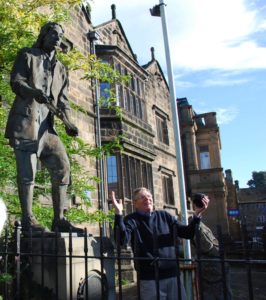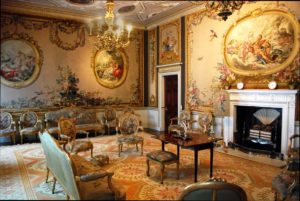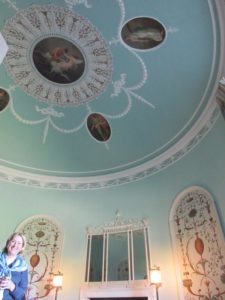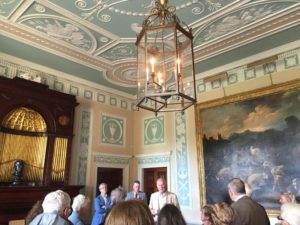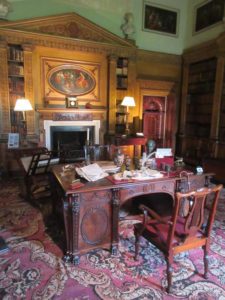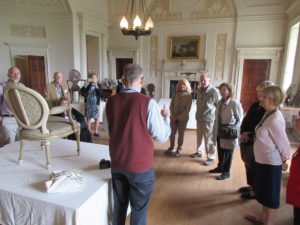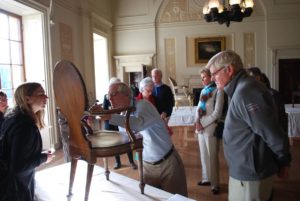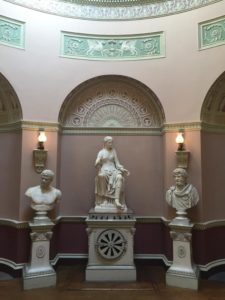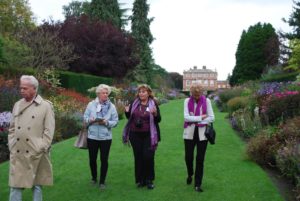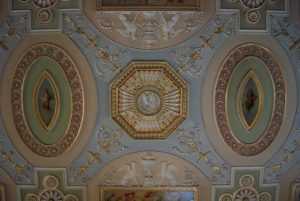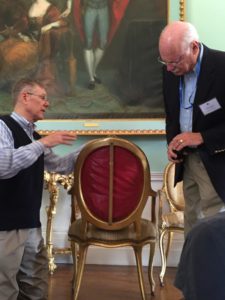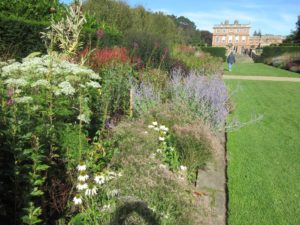Yorkshire in the Age of Chippendale
EVENTS > STUDY TRIPS ABROAD
STUDY TRIP ABROAD 2016 IN REVIEW
Yorkshire, England’s largest county, is a rural area hundreds of miles removed from London, yet the region contains some of the most ambitious country houses built during the long 18th century. Organized by Trust Governor and the Winterthur Professor of Decorative Arts Emeritus Brock Jobe, our fall Study Trip Abroad introduced the participants in two sold-out tours to the extraordinary range of grand dwellings found in this section of northern England.
Commissioned by a remarkable cast of characters, including an upstart merchant, a disgraced politician, and even a kinky husband, these landholders partnered with the greatest architects of their era, from Nicholas Vanbrugh to Robert Adam. Together they created dramatic illustrations of power and refinement, replete with naturalistic gardens laid out by Lancelot “Capability” Brown, portraits by Thomas Gainsborough, and ornate interiors painted by Antonio Zucchi and furnished by Thomas Chippendale, the focus of our expedition.
While fires, taxes, and country house “garden sales” have depleted the contents of many dwellings, we still managed to view upwards of two-thirds of the extant and in-situ furniture connected to Chippendale’s shop while touring Newby Hall, Harewood House, and Nostell Priory. Coincidentally, we will encounter the fourth significant collection of the great cabinetmaker’s work when we visit Dumfries House in Scotland next spring. These visits were complemented by an introduction to the extraordinary collection at Temple Newsam, where the impressive holdings of the Chippendale Society reside.
Chippendale’s full range of working styles was on view. For an American audience familiar with the designs found in his Cabinetmaker’s Director and the carved mahogany furniture made in the colonies based on those drawings, the breadth of Chippendale’s shop output was a revelation: exquisite suites of green and gilt case furniture, carved and fully gilt chairs reflecting Parisian taste, the delicate marquetry work of Adamesque tables and desks, and the robust Grecian designs that characterize the latter end of his career.
In addition to the furnishings, we viewed a variety of manuscript sources that detail the lively partnerships between Chippendale, Adam, and their patrons. In a letter from Chippendale to Rowland Winn regarding a suite of oval back chairs commissioned for Nostell Priory, Winn’s home, the cabinetmaker suggests his role as an effective and largely independent interpreter of neoclassicism, reporting how “Mr. Adam… totally approves of everything therein sketched,” i.e. Chippendale’s drawings for the chair design.
At Temple Newsam, renowned English furniture historian Adam Bowett and conservator Ian Fraser shared the results of their examination of an exceptional marquetry top pier table with the aim of reproducing the piece for an upcoming exhibition. Commissioned for Harewood, Chippendale’s employees harnessed a remarkable variety of wood types and colored dies to execute the elegant polychromatic design. The effects of time, however, have muted the original intent, and only through the scientific analysis of Dr. Heinrich Peining of the Bayerische Schlosserverwaltung near Munich will they be able to accurately recreate the top.
The opportunity to examine objects documented to Chippendale in their original setting offered a great thrill to devotees of antique furniture and more casually inclined participants alike. Given the enthusiastic attempts to associate all matter of 18th-century furniture to Chippendale, we gained immensely from the connoisseurial exercise of comparing the real McCoy to those objects merely attributed to him. Chippendale neither signed nor labeled his work, and historians are at the mercy of extant correspondence and account book entries to conclusively link wares to his shop.
Newby Hall on the banks of the River Ure near Ripon proved to be a favorite venue on many fronts. The oldest portion of the house was designed with the help of Christopher Wren in the 1690s but later improved and enlarged with the assistance of Adam and others. The glory of the house is enhanced by its surroundings, and a mention of Newby would not be complete without acknowledging the splendid gardens developed in the early 20th century with extensive herbaceous borders and woodland walks.
The marriage of Chippendale’s talents with Adam’s are seen in glorious detail of Newby’s Tapestry Room, a drawing room that Adam created from the entrance hall of the original house. The walls are covered with one of six sets of Gobelins tapestries made for English patrons, in this instance William Weddell, the owner of Newby. Like most clients shared by Adam and Chippendale, Weddell was an affluent alumnus of the Grand Tour, where he developed a taste for antiquity and returned to England with crates of purchases in tow.
The wall hangings were taken from designs by Boucher and serve as the backdrop for Chippendale’s suite of carved and gilt oval-back chairs covered in floral tapestries, also by Gobelins. These furnishings represent the unique instance of a suite of documented Chippendale chairs in their original upholstery and setting. According to Bowett, an important diagnostic characteristic of Chippendale’s chairs in this style is the medial brace that reinforces the oval back’s top and bottom rails. All told, Weddell purchased more than £7,000 of furniture from Chippendale, rivalling the scale of the commissions he received for Harewood and Nostell.
Brock shared the tale of Chippendale’s remarkable rise from an apprenticeship with his father in the small market town of Otley, to service as a journeyman under the employ of York cabinetmaker Robert Wood, to his exceptional leap to London’s St. Martin’s Lane, where he emerged as England’s most famous furniture maker. Despite his renowned career, however, we learned that Chippendale died a poor man. This woeful tale will sound familiar to those who recall the demise of the heralded early-19th-century Boston cabinetmaker Thomas Seymour. Chippendale’s destitute end was largely the result of his Yorkshire clientele’s inability or unwillingness to settle their accounts.
While his high status might not have ensured great wealth, Chippendale’s reputation as the leading practitioner of the era is undergoing renewed consideration. In preparation for the 300th anniversary of his birth in 2018, a variety of institutions are busily preparing projects on the cabinetmaker’s career and known work. A major exhibition is planned in Leeds that spring, which may warrant another visit to Yorkshire, with tours of Newby, Harewood, and Nostell included of course!
Complete a digital puzzle from this trip on our Puzzles webpage!


